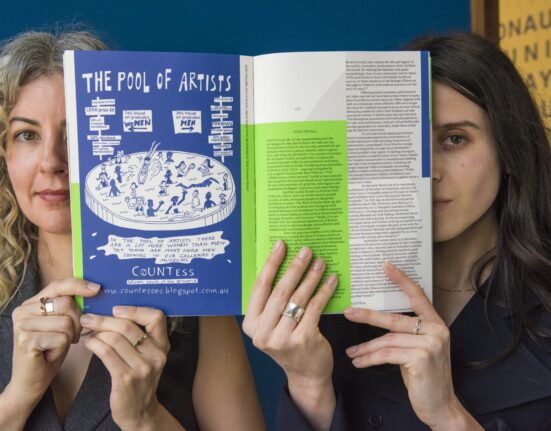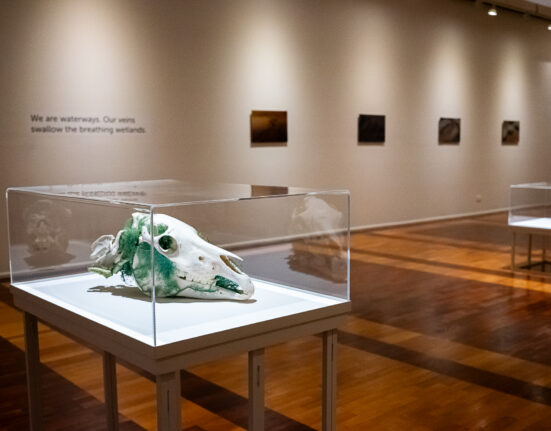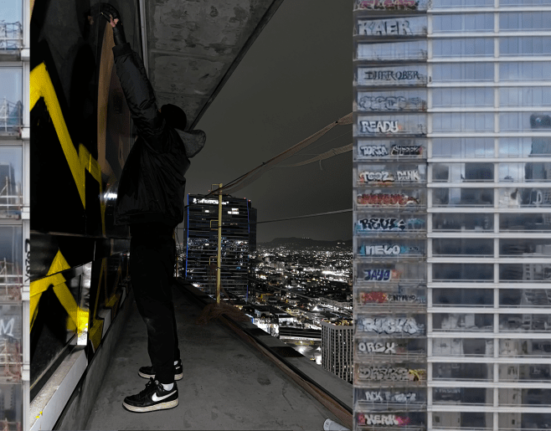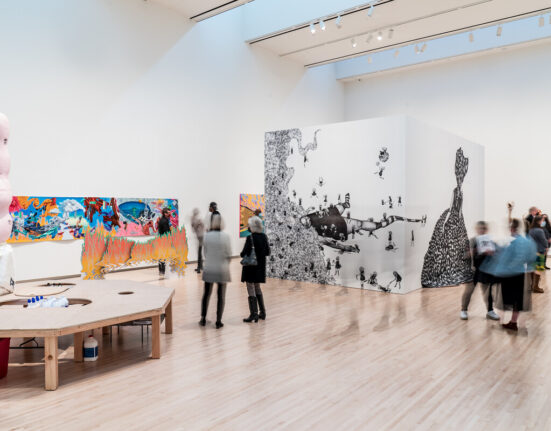A quartet of acclaimed visual artists are working on a series of bespoke art commissions as part of the £132 million transformation of concert hall venue, Bristol Beacon.
Bristol Beacon was formerly known as The Colston Hall, but was renamed after the statue of 17th century Bristol-born Edward Colston, an investor in the slave trade, politician and philanthropist, was famously tipped into the docks by protestors in 2020.
The multi million pound redevelopment of the 150-year-old Grade II listed venue is due to be completed later this year with a reopening date now confirmed as November 30th. The public art programme will play a key role in the iconic building’s new lease of life.
Four artists were selected by an advisory panel with the curatorial advice of Bristol-based Field Art Projects, and invited to make proposals, two of whom are artists associated with Bristol: Linda Brothwell and Libita Sibungu. The other two artists chosen are Rana Begum and Giles Round.
Their commissions will enhance the look and feel of the venue, adding to the richness of the transformation and the experience for visitors. Their work will include a response to Bristol Beacon’s relationship with the water that surrounds and flows through the city; the textiles and fabrics within the new performance spaces; an architectural installation within the new Lantern space; and a contemporary intervention on the façade of the Lantern building.
Louise Mitchell, chief executive of Bristol Beacon, said: “The transformation of our building is about more than just the bricks and mortar. It has been an important and iconic venue in the heart of the city for many generations, so our public art programme will help us to ensure we make the most of and celebrate this special space, reflecting the 150-plus years of history whilst also looking forward to the future.
“The four artists that were selected to deliver these commissions have proposed exciting new works that are sympathetic to their surroundings and will help to create an uplifting and joyful space that enhances the music and welcomes people in.
“One of our ambitions with the refurbishment of the Beacon is to create opportunities where we can profile the wealth of talent that exists within Bristol. We’re delighted therefore that two of the artists we’ve commissioned have a relationship with the city.”
Rana Begum
Rana Begum was born in Bangladesh and is now based in London. Her work ranges from drawings, paintings and wall-based sculptures to large-scale public art projects and she is known for her understanding and use of light and colour.
Rana is creating bespoke textiles in the transformed concert spaces. She is collaborating with Bristol-based fabric designers and textile trend consultancy Dash & Miller to assist with translating her work into textiles.
Linda Brothwell
Linda is a visual artist based at Spike Island in Bristol who works internationally. She trained in goldsmithing, silversmithing, metalwork and jewellery and is interested in heritage, place-making and how people look after their surroundings. Her multi-disciplinary practice casts her as a maker of objects, tools and publicly sited interventions.
Her focus for Bristol Beacon is to create a work for the façade of the Lantern building.
Linda says: “This will be the first permanent public artwork that I’ve done in the UK and it’s particularly meaningful to me that it will be in the city in which I’ve lived and worked for almost a decade.
Giles Round
Giles is creating an architectural installation within the atrium of the historic Lantern building.
Libita Sibungu
For Bristol Beacon’s public art programme, Libita has been given an open invitation to propose her own response to the venue and its position on the water. Libita said: “I am creating a soundwork developed from workshops on Bristol’s waterways, with black artists, writers, and historians.
“I’ve been thinking about Bristol being built around water, and how the Transatlantic Slave Trade created multiple passages and holes; in bodies, in memories, in time, in mother earth, ocean, in us. And what are the afterlives of these holes and how do we reckon with this violence? I hope the process of making this sound work, this refraction, this spectre – will connect people to the historical undercurrents of Bristol Beacon’s local geographies, providing a place for grief and catharsis through meditative reflection.”
The artists’ commissions will be ready in time for the completion of the building’s physical transformation and re-opening in November 2023.






